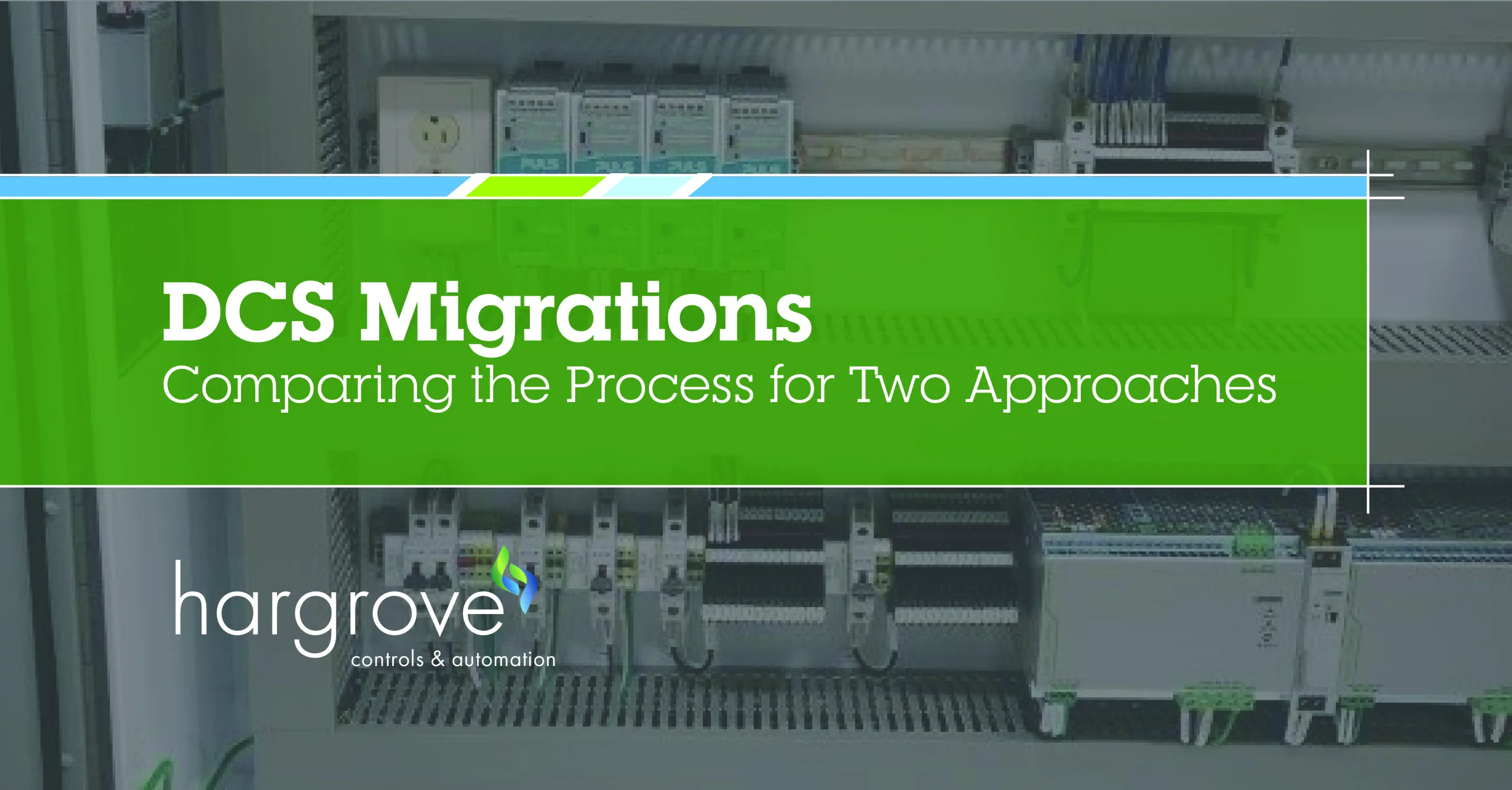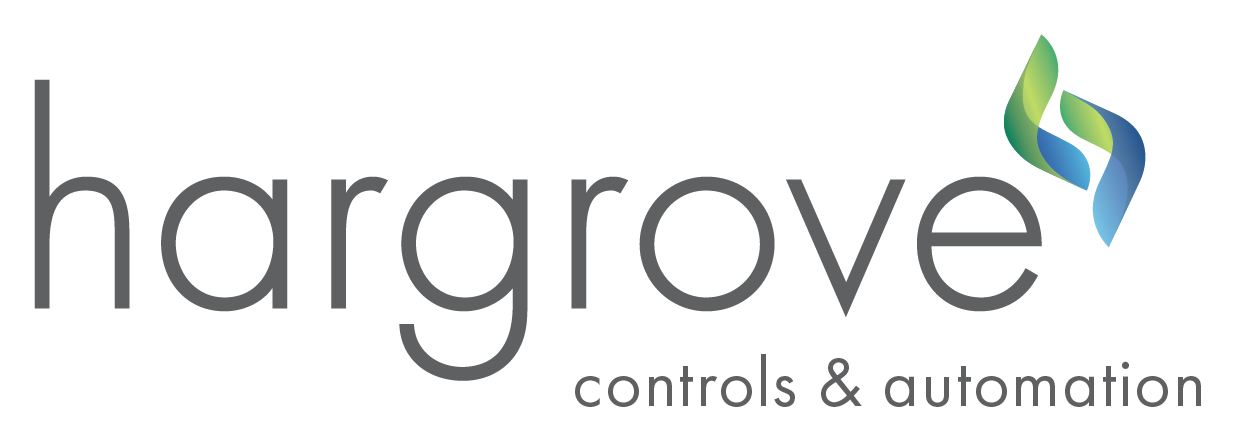DCS Migrations – Comparing the Process for Two Approaches

In your next upgrade project, you decide to migrate from one Distributed Control System (DCS) platform to a current technology platform or a different platform altogether. Should you recreate the current system as it exists today using a one-for-one approach or should you design it from the ground up using a from-scratch, optimization approach? Determining the most cost-effective strategy depends on many factors. Here is a breakdown of the process of each strategy.
Download our DCS System Comparison Guide
Reverse Engineering
Regardless of which strategy you implement, the first step in any migration is reverse engineering. This requires inspecting the existing control system to gain knowledge of the legacy system controls and understanding of the necessary functionality. If available, this should also include review of existing documentation regarding the control philosophy or implemented strategy. Reverse engineering normally entails an extensive study of the legacy system’s software code and hardware, as well as intensive interviews with operations and process personnel.
Your existing DCS may be antiquated and is most likely filled with unused or inactive code, referred to as “dead code”, that was used, trialed, or abandoned. This code is now obsolete and no longer required as a functional part of the system. Sometimes this “dead code” is a result of updating a control strategy, modifying instrumentation, or adding and removing parts of an operating unit. Migrating the code can lead to increased costs, extended schedules, unintended complications, and can make troubleshooting at startup cumbersome. Dead codes can lead to an oversized system and an unnecessary burden on the control system processers. With any DCS system, the upfront time spent to eliminate unused or “dead code” saves configuration/implementation time later in the process and results in a cleaner system that is also easier to use.
Best practices include documenting any code that is believed to be non-functional, inactive, or abandoned and leaving it out of the new system configuration. A well-designed Factory Acceptance Test will validate that the remaining migrated code still functions correctly. If proper documentation is in place, it will be easy to add this back in should the need arise.
In addition to studying the functionality of the system, engineers will investigate the state of legacy graphics on the HMIs. Through interviews with operators and a deep understanding of the system, controls engineers will be able to build graphics that easily bring forward pertinent information to operators. Modernized graphics with an increased focus on the user interface (UI) often make it easier to manage alarms and identify abnormal situations more quickly and effectively. By understanding the needs of the operators, the new graphics can make the operators’ efforts more efficient, reduce errors, and reduce response times.
From-Scratch Migrations
The from-scratch system is designed from the ground up to optimize and modernize the hardware, software, and manufacturing processes. New narratives are written for operation without duplicating the original code.
Considerations for a From-Scratch Migration
Here are a few factors to consider for a from-scratch migration.
- A from-scratch migration fills the intent of the control system in the best way possible but can take more time upfront to implement.
- If you are upgrading to a dissimilar system, it will take extra time to translate and troubleshoot the legacy code on the new system. A from-scratch migration can alleviate this need.
- If you were to write code today in a from-scratch system, you may have only ten blocks as opposed to 100 to perform the functions, making the system simpler and easier to troubleshoot.
Benefits of a From-Scratch Migration
Although the idea of starting from scratch with the modern DCS may seem like a disregard of the intellectual property that was developed, taking a fresh look at the system has benefits.
- More efficient design, both in its operation as well as in its future maintenance.
- Ability to incorporate technological advancements for additional functionality and optimize the process to create the most efficient solution.
- Faster troubleshooting resulting in less downtime due to the lean code.
- Up-to-date system documentation.
- Less expensive going forward for maintenance and improvements.
- Lean code allows the best use of the latest technology and faster optimization with fewer considerations.
One-For-One Migrations
In a one-for-one migration, you take everything in the legacy system – every wire, every loop, every piece of code, every piece of logic, and recreate it exactly in the new system. A one-for-one migration determines the intricacies of your system’s control logic and replicates that structure and code completely on the new DCS.
During the migration process on a one-for-one system, you are evaluating your old system to determine what can be programmed into your new system and how to best leverage the advanced capabilities for complex structured text.
It is tempting to force legacy system control strategies into a new system as-is even though the new system has a built-in, off-the-shelf, option to handle the legacy logic. It is crucial to ensure a proper understanding of new features and how they are properly implemented. Creating extra configuration in a new system that is unnecessary to accomplish the old strategies can be kludgy and lead to “bit flipping”.
For example, leaving configuration in structured text format when the new system has built-in functionality to accomplish the same control is unnecessary. It can lead to difficulty when troubleshooting and can require more processing power.
Simple to moderately complex control schemes can be migrated one-for-one, and you can often utilize tools that will convert the old system to the new system. For the more complex control strategies, there are advantages to stepping back to ensure the overall functionality of the control scheme is understood and the configuration implemented in the new system is utilizing as much built-in functionality as possible. This is often a less time-consuming approach and leads to fewer complications at startup.
Considerations for a One-for-One Migration
If you are not looking to change the layouts or modernize your graphics, a one-for-one migration might be a good strategy. There are also times when a one-to-one solution may or may not be more cost effective and lower risk. Here are a few factors to consider.
- A one-for-one migration freezes the clock. Since the legacy system logic is being replicated, it does not take advantage of the modernization and incorporated advancements in technology.
- A one-for-one system requires more effort to maintain the system going forward, is more difficult to startup, and often requires additional processing capacity in the controllers.
- A one-for-one migration will not necessarily have the exact same operation and contain all the knowledge and functionality of the old system.
- Moving from a legacy system to a new system on the same vendor platform may have built in efficiencies for a migration.
- A system that lacks complex configuration – low level points and simple PID loops – is very easy to migrate in a one-for-one migration strategy.
- Similarities in configuration strategies implemented from the legacy system to the new system will help determine how successful a one-for-one strategy will be at reducing cost and risk.
- Just because your overall implementation strategy is one-for-one, do not assume that everything can be migrated one-for-one.
Benefits of a One-for-One Migration
- Utilizing a one-for-one strategy can save time on graphics. If the same layouts are used, it will not take as much time to convert. With configuration activities, integrators should ensure that the built-in functions of the new graphics package are understood.
- When the appropriate boundaries are set around what is migrated utilizing a one-for-one strategy, the time required for implementation can be significantly reduced while still producing a clean system that is easy to maintain moving forward.
Completing Your DCS Migration
When completing a DCS migration, there are many factors to consider when determining which strategy is best. With either a one-for-one strategy or a from-scratch strategy, industry specialists with knowledge of both the legacy and new platforms can review your system’s intricacies to help you to determine your optimal solution.
Are you looking to migrate your legacy system and not sure where to start? Contact Hargrove today to discuss your migration strategy.

